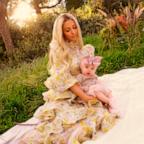Reporter's Notebook: How Donating Scared the Bone Marrow Out of Me
One ABC News producer comes to terms with bone marrow donation.
May 13, 2011— -- When I signed up to be a bone marrow donor, I never imagined the terror I would feel when I received the phone call notifying me that I possibly matched.
The decision to sign up with the National Marrow Donor Program's Be the Match registry was easy for me. The registration, which entailed only a simple cheek swab, made it even simpler. But when I received the call one year later that I may have to follow through with my promise, the decision to be a donor wasn't greeted with much understanding by some of my family and friends.
Bone marrow donation hurts, they told me. Not to mention I would place my body at risk to help a total stranger.
Donors can give bone marrow one of two ways. The first is a surgical procedure in which marrow is drawn from the back of a donor's pelvic bone with a hollow needle. The second is a blood draw from the arm that separates the blood cells needed for the marrow transplant and then replaces the plasma cells. I was asked to do the latter, which is also known as peripheral bone marrow donation.
There was also the likelihood that my marrow type wouldn't match at all.
"There's no rhyme or reason, you just have to be that perfect match," my bone marrow advocate, Sarah, told me.
Only one in 540 donors actually match. And there's no way to predict the chance that my marrow would be a close enough match to lead to donation until further tests were done. Although she said it so calmly, her words raised a mix of fear and eagerness inside me.
At the time, the list of reasons why I shouldn't be a donor seemed longer than the reasons why I should.
But Ann Deschamps, 32, of Bethesda, Md., who faced this similar situation, never gave her decision a second thought.
"More of a 'Hey, why not.' Now that there was an actual person involved I felt like I should go ahead and do it," said Deschamps, who matched in March 2010, nearly a decade after registering.
Deschamps' recipient, Peggy Le Blanc, 46, had battled multiple myeloma, a rare form of cancer found in bone marrow, since November 2005.
One of my friends sent me a blog of LeBlanc's story a few months after I matched. While Deschamps and I both recieved the same call, she made the decision seem easier to make.
Bone marrow donation is often the last option for many, including Le Blanc, a mother of two young children. After undergoing standard treatment and multiple clinical trials, doctors said a bone marrow transplant would be one of her best shots at survival. Worse, Le Blanc's first possible match declined. Deschamps became one of only two more lifelines left.
In March 2010, within a few hours of each other, Deschamps' donation and Le Blanc's transplant were complete.
"When I was watching the marrow go into me I was overwhelmed with feelings," said Le Blanc. "I can't believe that a person who I don't know went through so much pain this morning to help save my life."
But the journey that connected these two women together didn't end there.
For Le Blanc, a simple thank-you note she sent to Deschamps did not suffice. Le Blanc wanted to meet her donor.
"She had such an impact on our lives," said Le Blanc. "I want her to know what she means to us."
The National Marrow Registry does not release contact information on donor or recipient within the first year following a donation. And many who donated do not have the opportunity to meet their match. But Le Blanc lived only 10 miles away from Deschamps, so the decision to connect was obvious for them.




